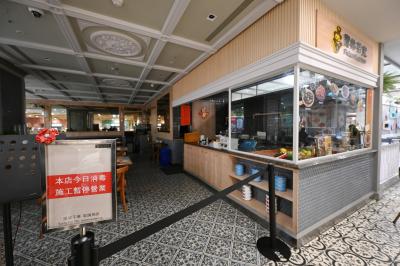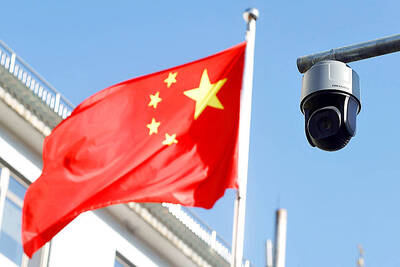Although it has been 10 years since the first draft bill on Aboriginal autonomy was completed, the issue of autonomy remains unresolved and was the focus of criticism from Aboriginal politicians attending the National Aboriginal Policy Conference yesterday.
It’s been nine years since the last National Aboriginal Policy Conference but Aboriginal autonomy was still the hottest topic, just as it was then.
“The draft bill on Aboriginal autonomy has been lying there for 10 years, it’s something for which Aborigines have very high expectations. Do we have to wait another 10 years before it can be finally passed?’ asked Lin Hsin-yi (林信義), mayor of Taoyuan County’s mostly Atayal Fusing Township (復興).
“I know people have different ideas about Aboriginal autonomy, and several versions of the bill have been proposed, but I don’t care which version passes because we can’t foresee all the problems. We can always fix it later on,” he said.
“When I visited autonomous regions of indigenous peoples in Canada, they told me that it took them decades of struggle with some violence to gain autonomy,” Lin said. “Well, we don’t mind using violent means if that’s what we have to do.”
Several other Aboriginal politicians, including Hsinchu County’s Jianshih Township (尖石) Mayor Yun Tien-pao (雲天寶), echoed Lin’s impatience.
Yun said he opposed President Ma Ying-jeou’s (馬英九) proposal at the conference that autonomy be implemented “on a trial basis,” saying that Aborigines had governed themselves for thousands of years before modern state governments arrived in Taiwan.
“Saying that we need to try it first shows distrust in Aborigines’ ability to govern ourselves,” he said.
In response, Council of Indigenous Peoples Minister Sun Ta-chuan (孫大川) said that he fully supported Aboriginal autonomy, because the current administrative system is eroding Aboriginal culture and harming their political rights. He promised that a bill on Aboriginal autonomy would be passed within the next two years.
“The Cabinet is trying to be cautious about autonomy to avoid causing ethnic tensions in the country. Right now, different agencies have different ideas about certain details, but we have a consensus on the general direction, so it won’t be another 10 years before it passes,” Sun said.
“If we can’t get it to pass within the next one or two years, I’d rather just forget about it,” he said.
Tseng Hua-te (曾華德), convener of the Autonomous Confederation of Paiwan Aborigines and a former Chinese Nationalist Party (KMT) legislator, was skeptical.
“I doubt if autonomy can become a reality within two years, because even if we pass the bill on autonomy, we have to change other laws, including the Financial Distribution Act [財政收支劃分法], the Administrative Division Act [行政區劃分法], the Public Debt Act [公共債務法] and human resources regulations,” he said.
Meanwhile, several township mayors also raised concerns about the status of Aboriginal townships once they become districts in special municipalities following city-county mergers at the end of the year.
Only Aborigines can be elected as heads of Aboriginal townships, but district chiefs in cities are appointed by the mayor, so many Aboriginal representatives are worried that mergers would compromise Aboriginal political rights.
Ministry of the Interior official Luo Jui-ching (羅瑞卿) said the ministry was considering asking the Executive Yuan to designate districts in special municipalities that were originally Aboriginal townships as “Aboriginal regions” to ensure that only Aborigines can serve as district chiefs.

POLAM KOPITIAM CASE: Of the two people still in hospital, one has undergone a liver transplant and is improving, while the other is being evaluated for a liver transplant A fourth person has died from bongkrek acid poisoning linked to the Polam Kopitiam (寶林茶室) restaurant in Taipei’s Far Eastern Sogo Xinyi A13 Department Store, the Ministry of Health and Welfare said yesterday, as two other people remain seriously ill in hospital. The first death was reported on March 24. The man had been 39 years old and had eaten at the restaurant on March 22. As more cases of suspected food poisoning involving people who had eaten at the restaurant were reported by hospitals on March 26, the ministry and the Taipei Department of Health launched an investigation. The Food and

The long-awaited Taichung aquarium is expected to open next year after more than a decade of development. The building in Cingshui District (清水) is to feature a large ocean aquarium on the first floor, coral display area on the second floor, a jellyfish tank and Dajia River (大甲溪) basin display on the third, a river estuary display and restaurant on the fourth, and a cafe and garden on the fifth. As it is near Wuci Fishing Port (梧棲漁港), many are expecting the opening of the aquarium to bring more tourism to the harbor. Speaking at the city council on Monday, Taichung City Councilor

A fourth person has died in a food poisoning outbreak linked to the Xinyi (信義) branch of Malaysian restaurant chain Polam Kopitiam (寶林茶室) in Taipei, Deputy Minister of Health and Welfare Victor Wang (王必勝) said on Monday. It was the second fatality in three days, after another was announced on Saturday. The 40-year-old woman experienced multiple organ failure in the early hours on Monday, and the family decided not to undergo emergency resuscitation, Wang said. She initially showed signs of improvement after seeking medical treatment for nausea, vomiting and diarrhea, but her condition worsened due to an infection, he said. Two others who

Taiwanese should be mindful when visiting China, as Beijing in July is likely to tighten the implementation of policies on national security following the introduction of two regulations, a researcher said on Saturday. China on Friday unveiled the regulations governing the law enforcement and judicial activities of national security agencies. They would help crack down on “illegal” and “criminal” activities that Beijing considers to be endangering national security, according to reports by China’s state media. The definition of what constitutes a national security threat in China is vague, Taiwan Thinktank researcher Wu Se-chih (吳瑟致) said. The two procedural regulations are to provide Chinese